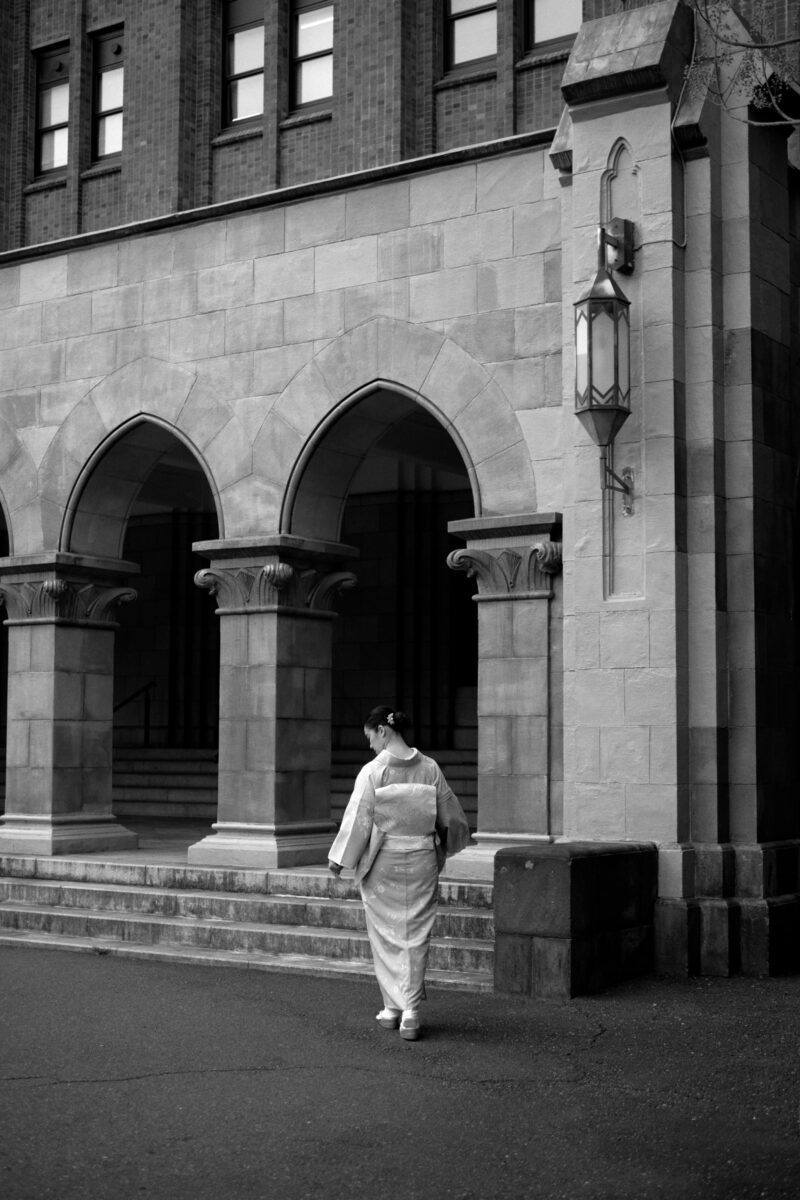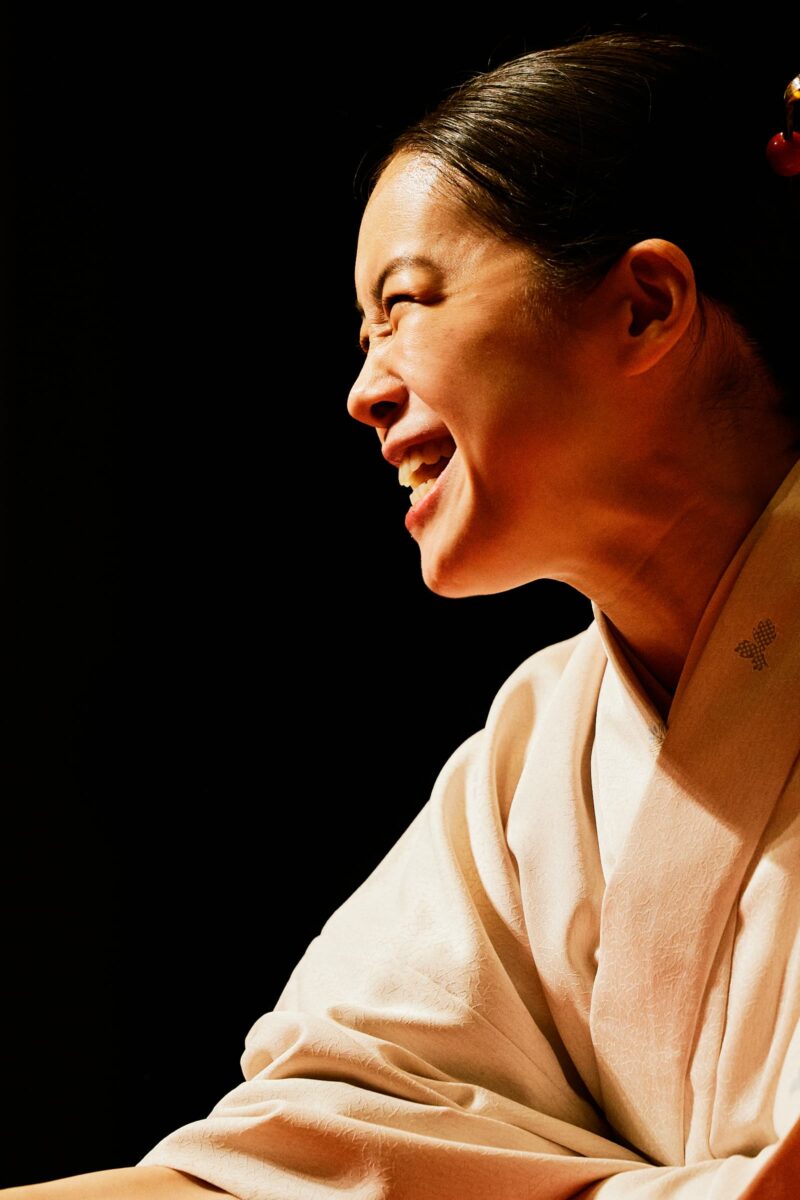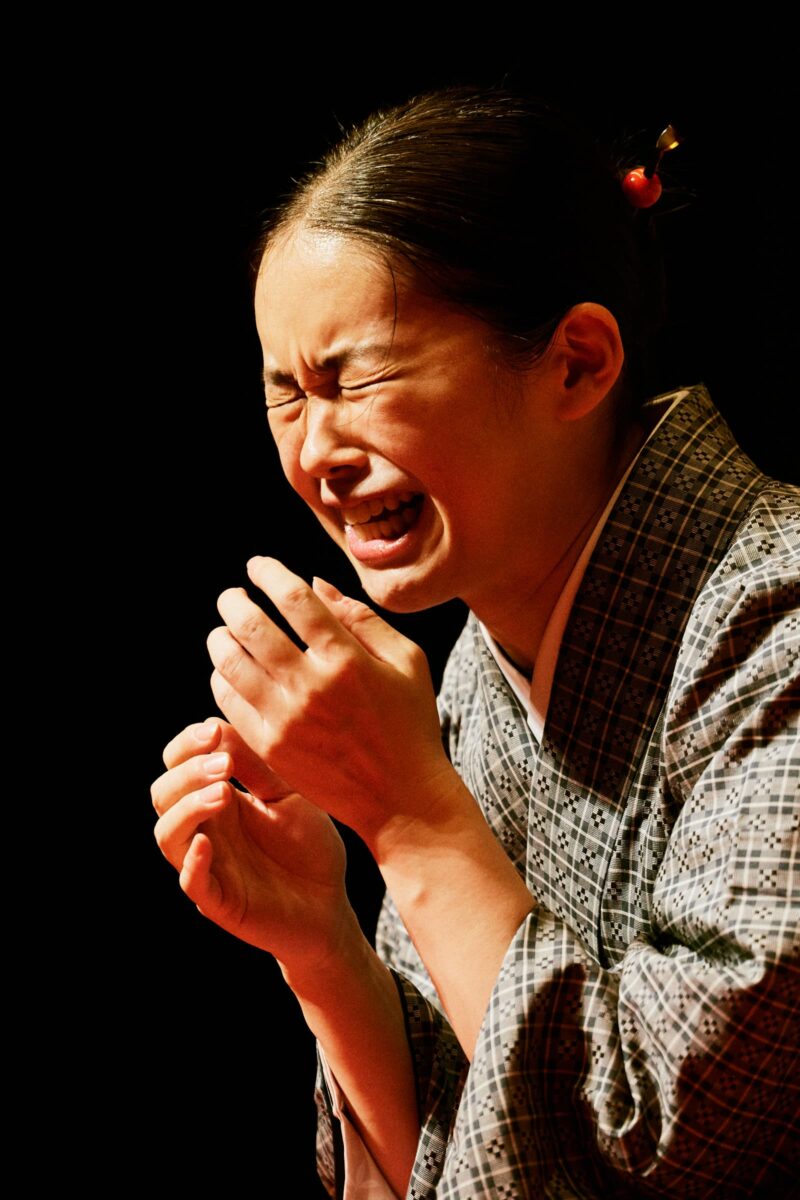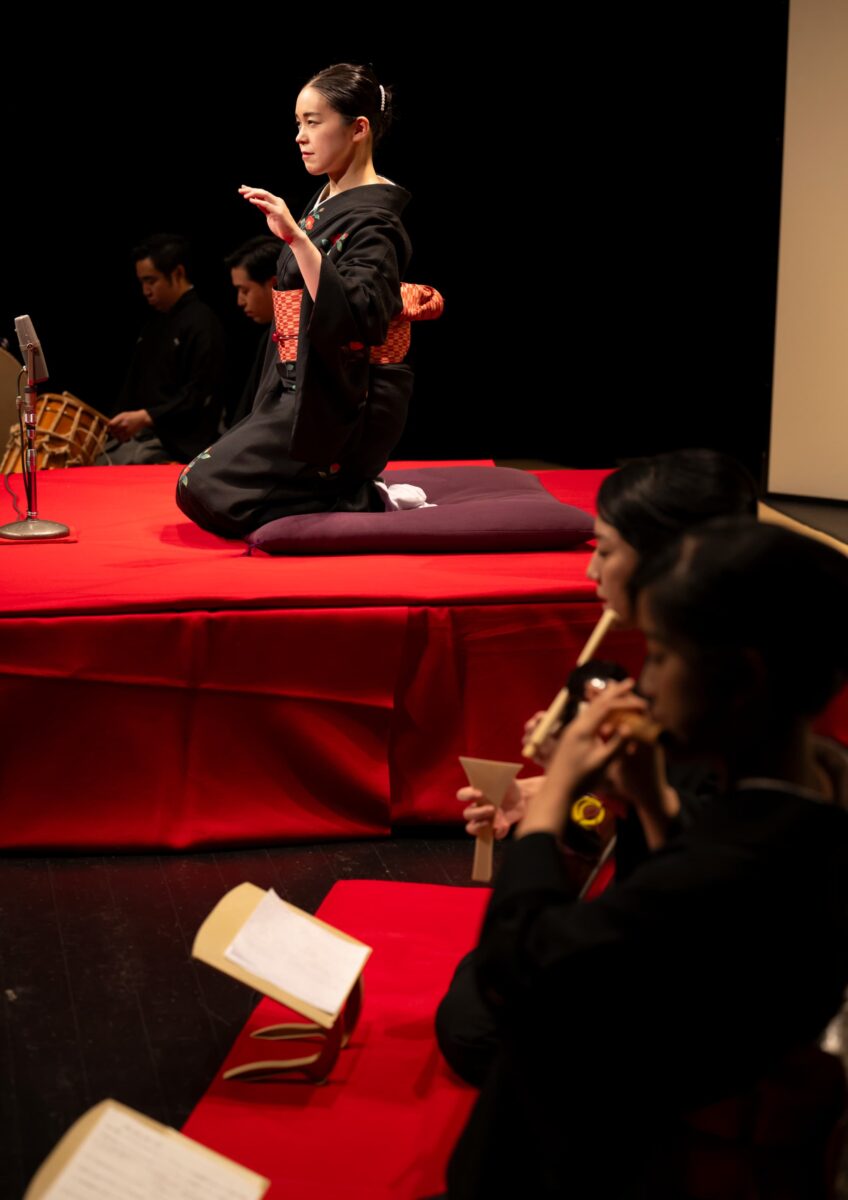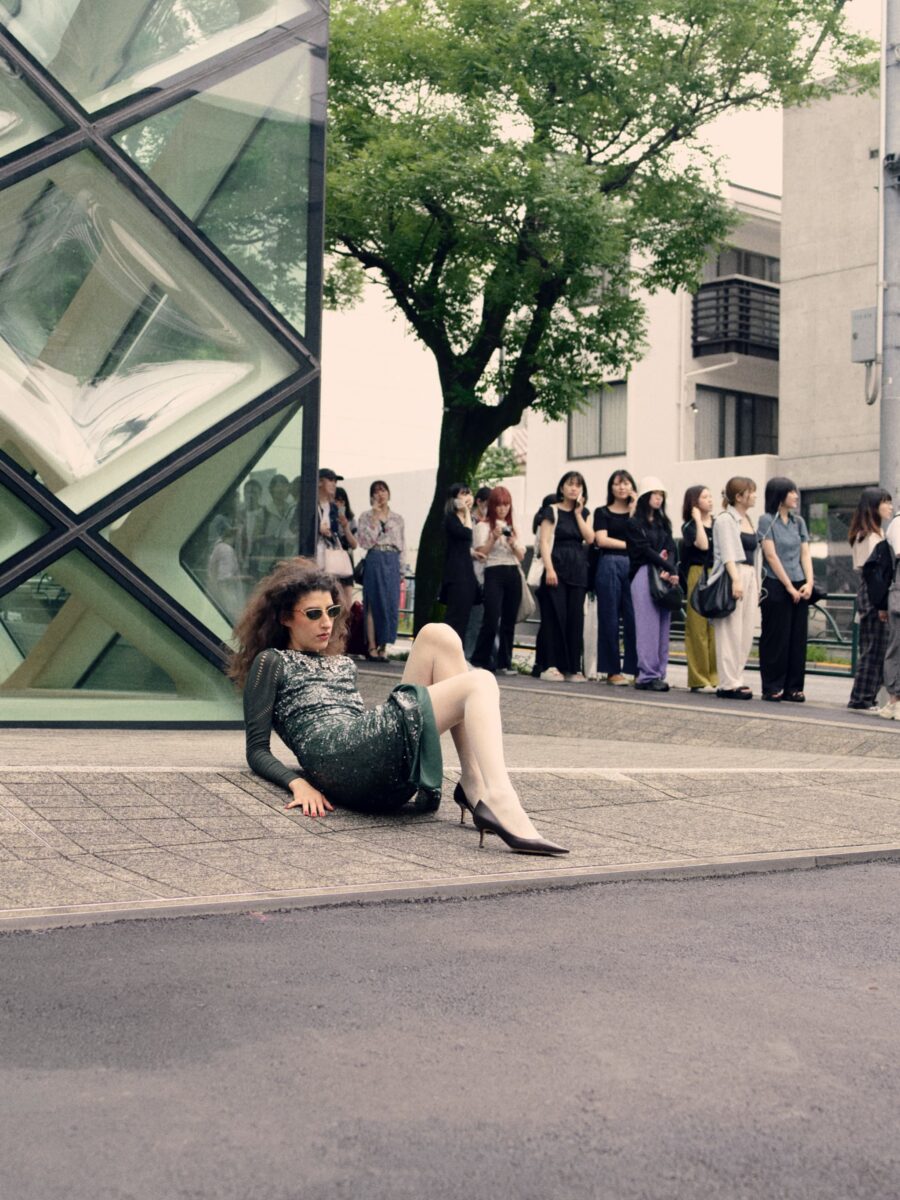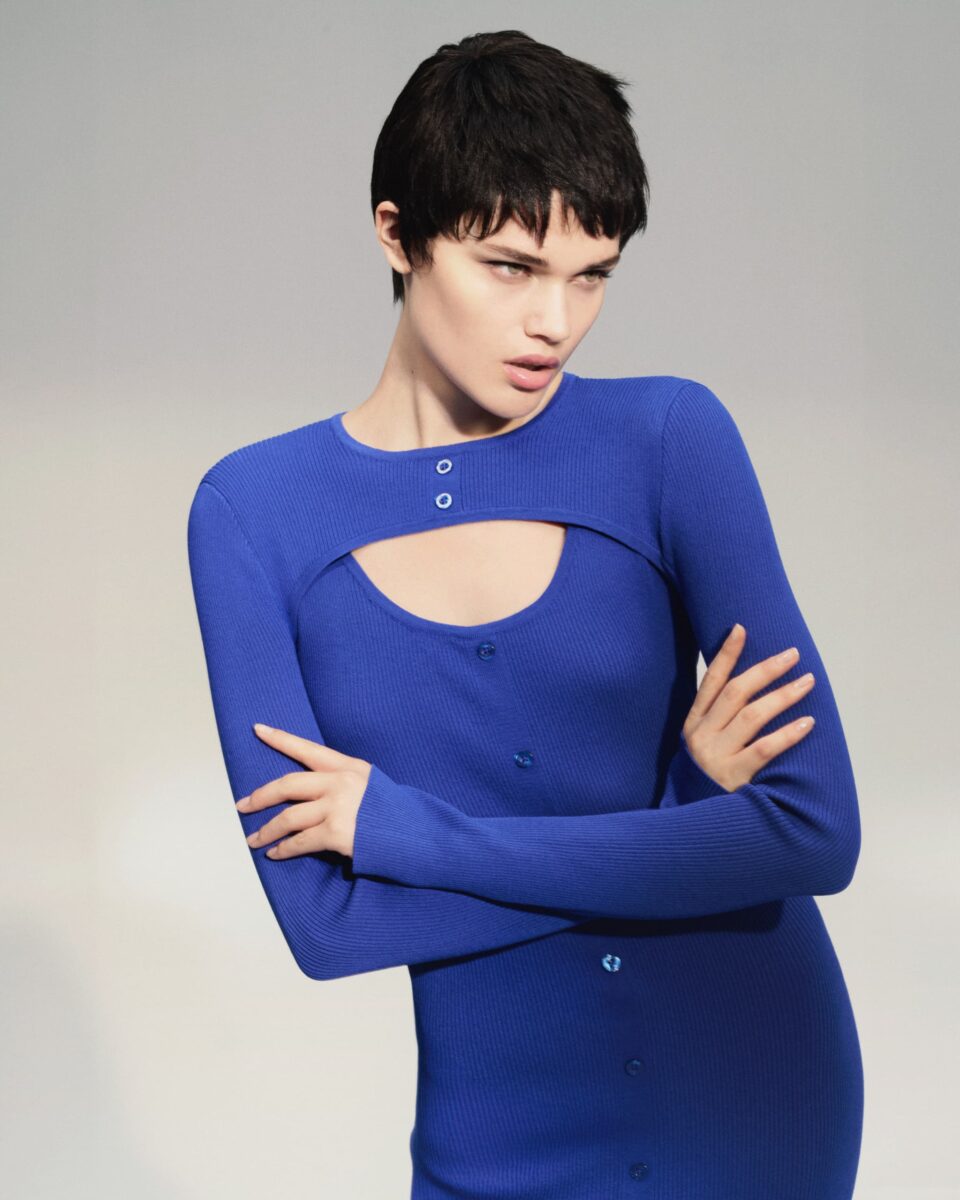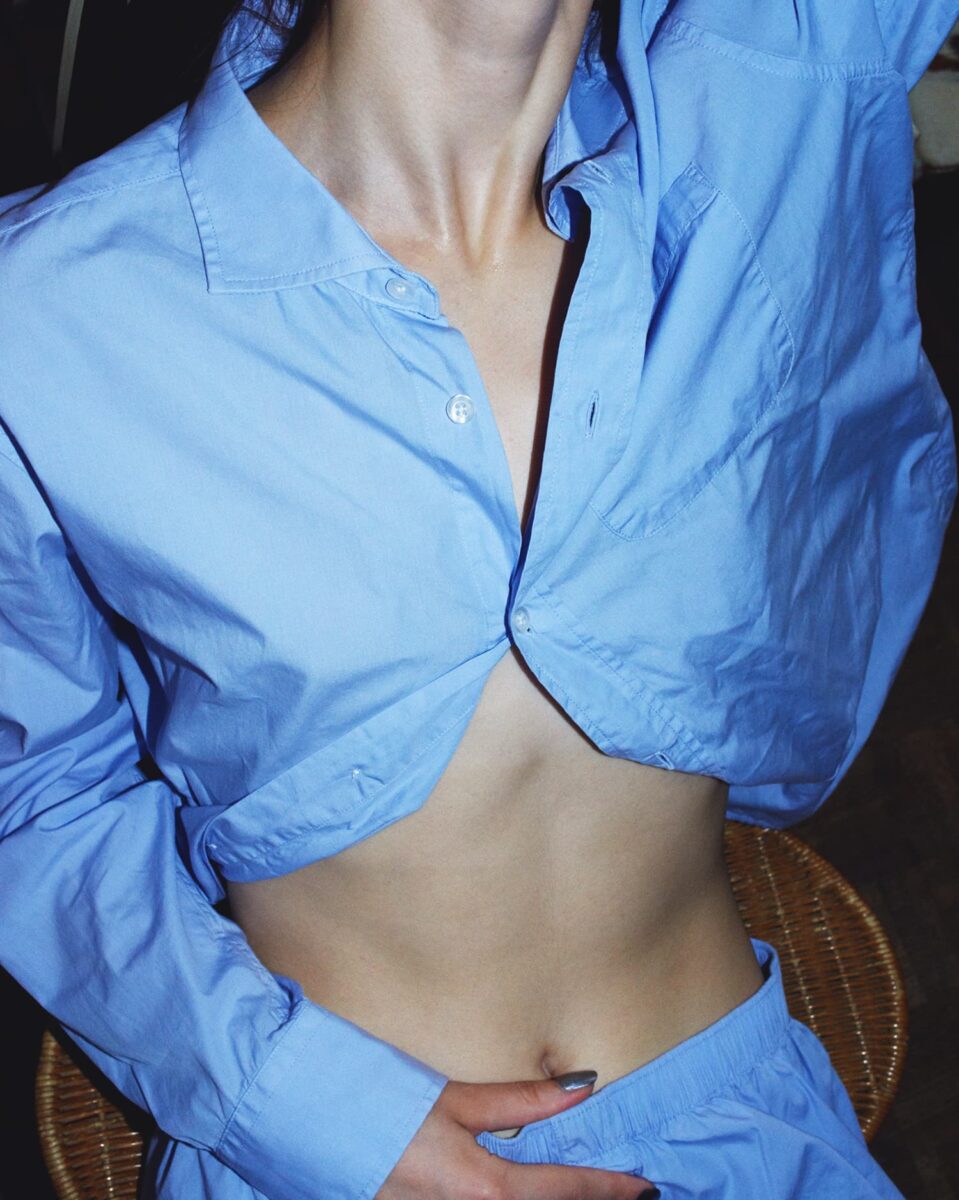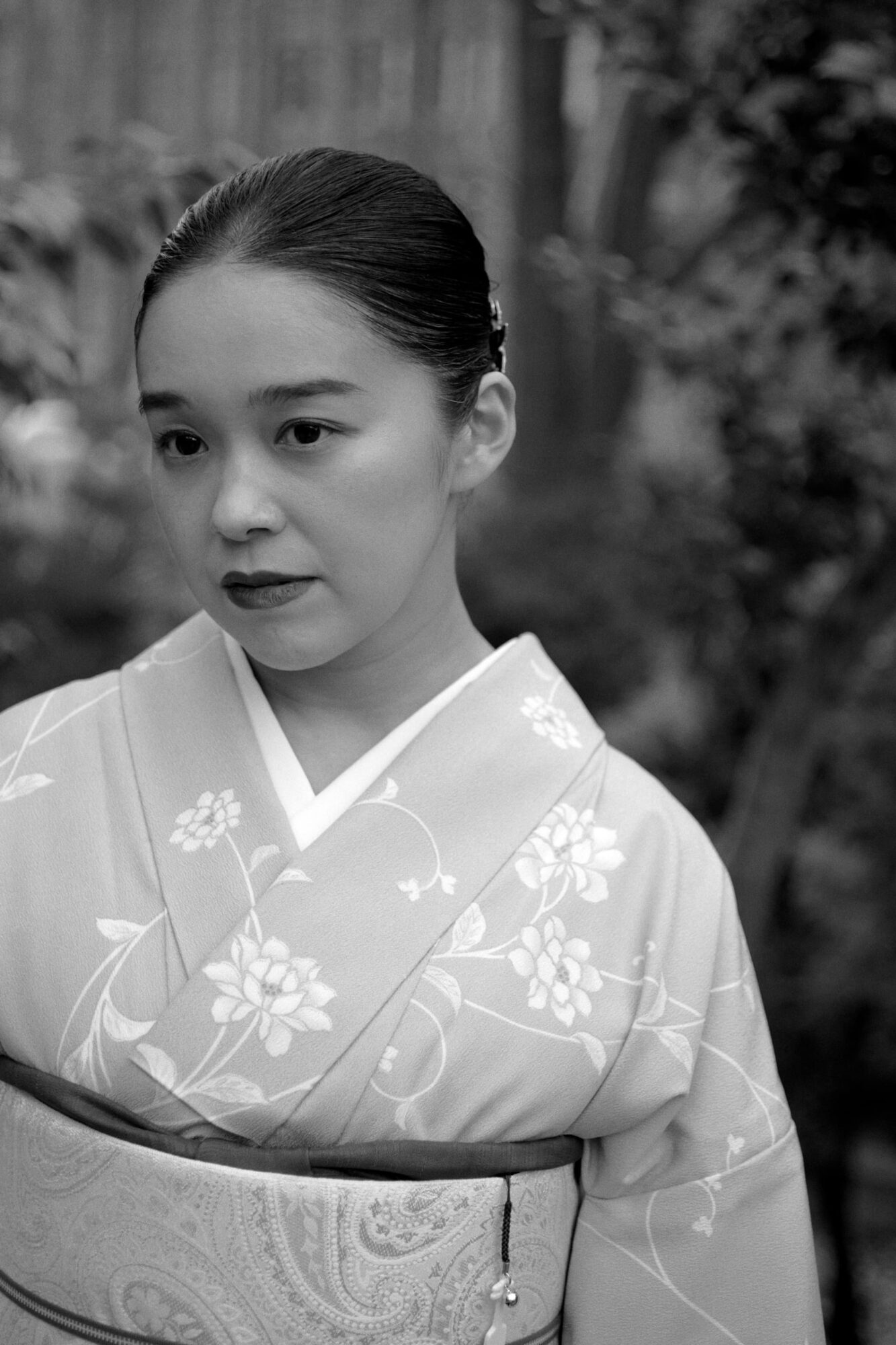
Rakugo, loved by the common people of Edo, is a storytelling art with a deep sense of nostalgia. It depicts human weakness and foolishness, and the ridiculousness that lies beneath them, with compassion and humanity. However, while rakugo is supposed to be a place where everyone can relax and enjoy themselves, many people tend to avoid it because of the impression that it is “prestigious”.
However, there is one rakugo performer who is attempting to bring to light the universal sentiments that reside in rakugo with a modern perspective. She is Hayashiya Tsuruko, an up-and-coming rakugo performer who became the first woman to be “passed over” for promotion to the rank of shin-uchi(master storyteller) in March 2024. In the male-dominated world of rakugo, Tsuruko paved the way from a woman’s unique perspective, and now she continues to take on the challenge of breathing new life into the classic rakugo genre.
Tsuruko talks about the real emotions hidden in classical rakugo that we are living in today.
Redrawing classic rakugo as a shin-uchi
Ms. Tsuruko Hayashiya first encountered rakugo at a university rakugo club, and in 2010, after graduation, she was introduced to the ninth generation master Shozo Hayashiya.
In March 2011, she took her debut performance as zenza;opening act, and in November 2015, she was promoted to Futatsume; the second highest rank of professional rakugo performers.In March 2024, she became the first female “Nuki shinuchi” in the Rakugo Association.
Nuki Shin-uchi refers to a system in which a rakugo performer is promoted to the rank of Shin-uchi (the highest rank of rakugo artist) early in the promotion process, which normally takes 10 years or more, if the performer’s ability and future prospects are recognized. Tsuruko’s ability is well documented, but the reason why she has attracted so much attention is not limited to her skill in storytelling.
Since her days as a Futatsume performer, Tsuruko has taken on the challenge of shedding light on women who have been portrayed as minor characters in classical rakugo, and attempting to reweave the story from their perspectives.
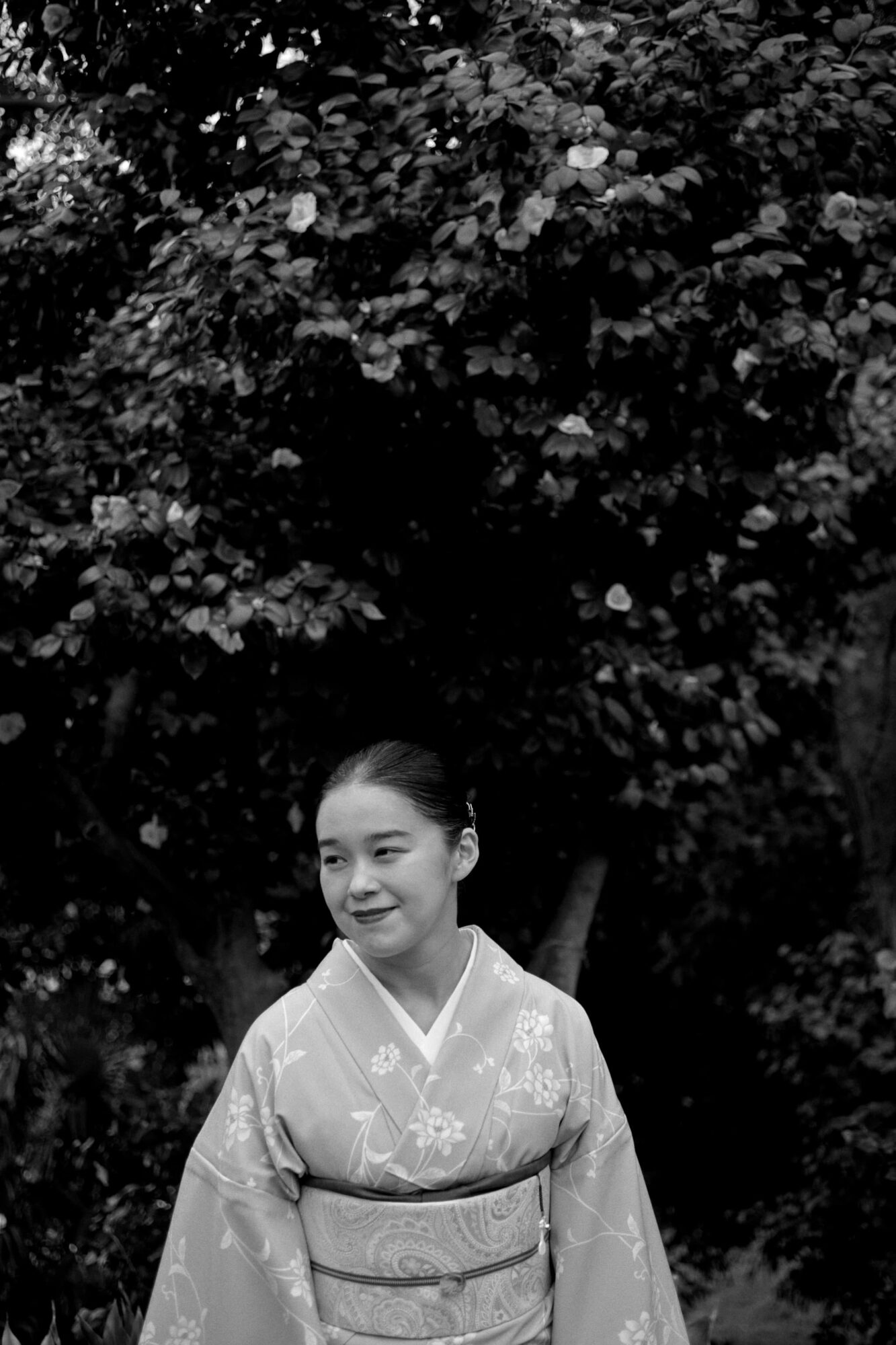
For example, in “Shibahama,” one of the plays newly redrawn by Tsuruko, the narrator of the story is not the fishmonger Katsugoro, but his wife Omitsu. The story is told not by Katsugoro, the fishmonger, but by his wife, Omitsu, who is rarely mentioned in the original story.
”Shibahama is a humanistic story about a married couple, describing the interaction between Katsugoro, a fishmonger with a bad drinking habit, and his wife Omitsu. One day Katsugoro finds a wallet containing a large sum of money, but Omitsu, in order to get her lazy husband back on his feet, lies to Katsugoro, who has fallen asleep drunk, saying that it was a dream. But before she hides the wallet and says it was a dream, Omitsu consults with the landlord. But that scene is never depicted. So it occurred to me that there must have been an “unspoken drama” in the story.”
Tsuruko then began to search for the drama that had not yet been told. In doing so, she naturally came up with a form of love and familial love that is also common to us today.
Overlay yourself - shed light on universal emotions
”What had always bothered me about “Shibahama” was why Omitsu went to such lengths to support her husband, who had become addicted to alcohol and stopped working. It is not so easy to hide a wallet and even lie about it. But as I carefully imagined it, it became clear to me that Omitsu truly loved Katsugoro when he was working so vigorously. It was because she believed in those happy days that she believed she could go back there again.”
Tsuruko says that she naturally felt sympathy for Omitsu as she wove the story together, imagining memories of when the couple first met and their casual daily interactions. This was a new experience for Tsuruko, who has been involved in the world of classical rakugo, a form of comic storytelling in which the narrator is usually a man.
”I myself love performing classical rakugo, but I have never felt so much empathy for the characters, Male performers often say that they can relate themselves to the main characters in their stories, but when the narrator is of a different gender, the way you feel and get into the story is a little different,” she said.
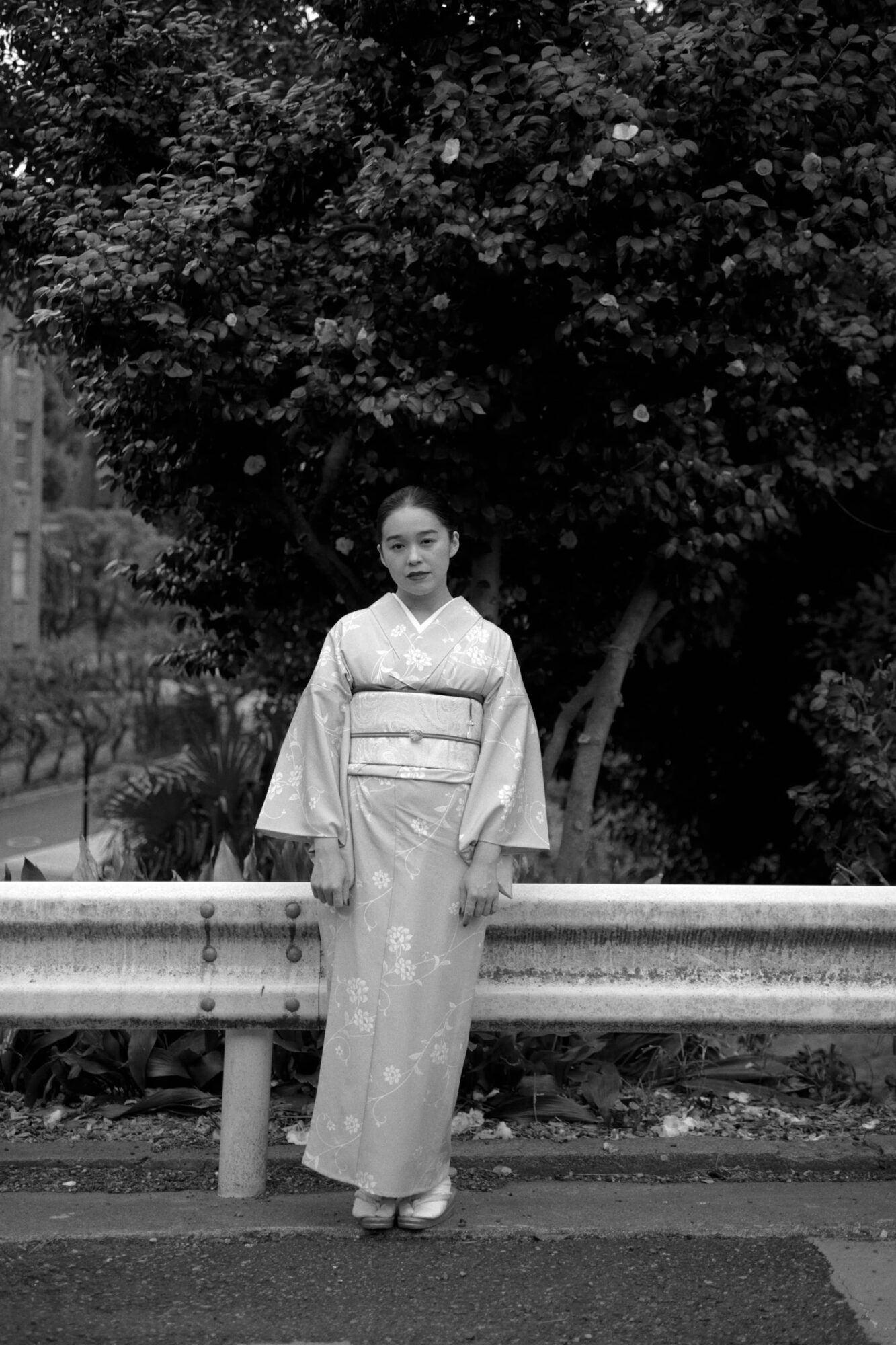
Through the perspective of a woman who had never been portrayed before, Tsuruko was reminded of the fact that the people who lived in Edo were troubled by the same problems as those of us living today, and that they cared for others and tried their best to live their lives.
No matter how old-fashioned the depiction may be, feelings for others are universal feelings that have not changed in the past. By gently shedding light on such human feelings, the stories of the distant past are perfectly in tune with the current era. When we laugh and cry at the people who lived in the old days of Edo, there is a spirit that transcends time.
“We can laugh at stories that people in the past laughed at, and we can laugh at them now, too. I think that is very romantic.”
Tsuruko’s challenging rakugo, which is spun with empathy at its core, is likely to bring rakugo, a traditional art form, even closer to listeners by evoking their empathy as well.

To be someone who has someone's back.
When you experience rakugo from the perspective of empathy, there are moments when your own feelings are unexpectedly reflected in the words and gestures of the characters. In rakugo, we are shown the subtleties of the human heart that have not changed in the past, nor have they changed in the present.
Tsuruko smiles and says, “I would be the happiest if someone else felt as if it were me and said, ‘I understand’.”
Tsuruko is often introduced as the first woman to be selected as a “shin-uchi. However, Tsuruko does not consider her title as a “female rakugo banashi ” as anything special. She says that the only axis of her approach to rakugo is whether or not she can “reach” her audiences with her stories.
However, it is also true that this naturalistic attitude has unexpectedly had a deep impact on women living in today’s society. For example, a female viewer once commented on a documentary program that featured her as follows:
“I have been living in a male-dominated society for a long time, but I was already having a hard time with that. But after watching this program, I felt that it was okay to make an effort to carve out a new path. I feel much lighter.”
Hearing these words, Tsuruko herself was encouraged. Even though she does not speak loudly about the significance of being a female comical storyteller, her appearance quietly pushes women’s backs. This is another power of Tsuruko’s rakugo. I’m very happy,” Tsuruko said, beaming a little.
“I really like audition shows. I get a lot of courage from the way they challenge themselves, sometimes going wrong, and then getting back up again. I want to be someone who keeps challenging myself like that.”
She hopes that someone who is trying hard in their daily life will be able to look forward just a little bit. Tsuruko’s rakugo will continue to gently push us forward.
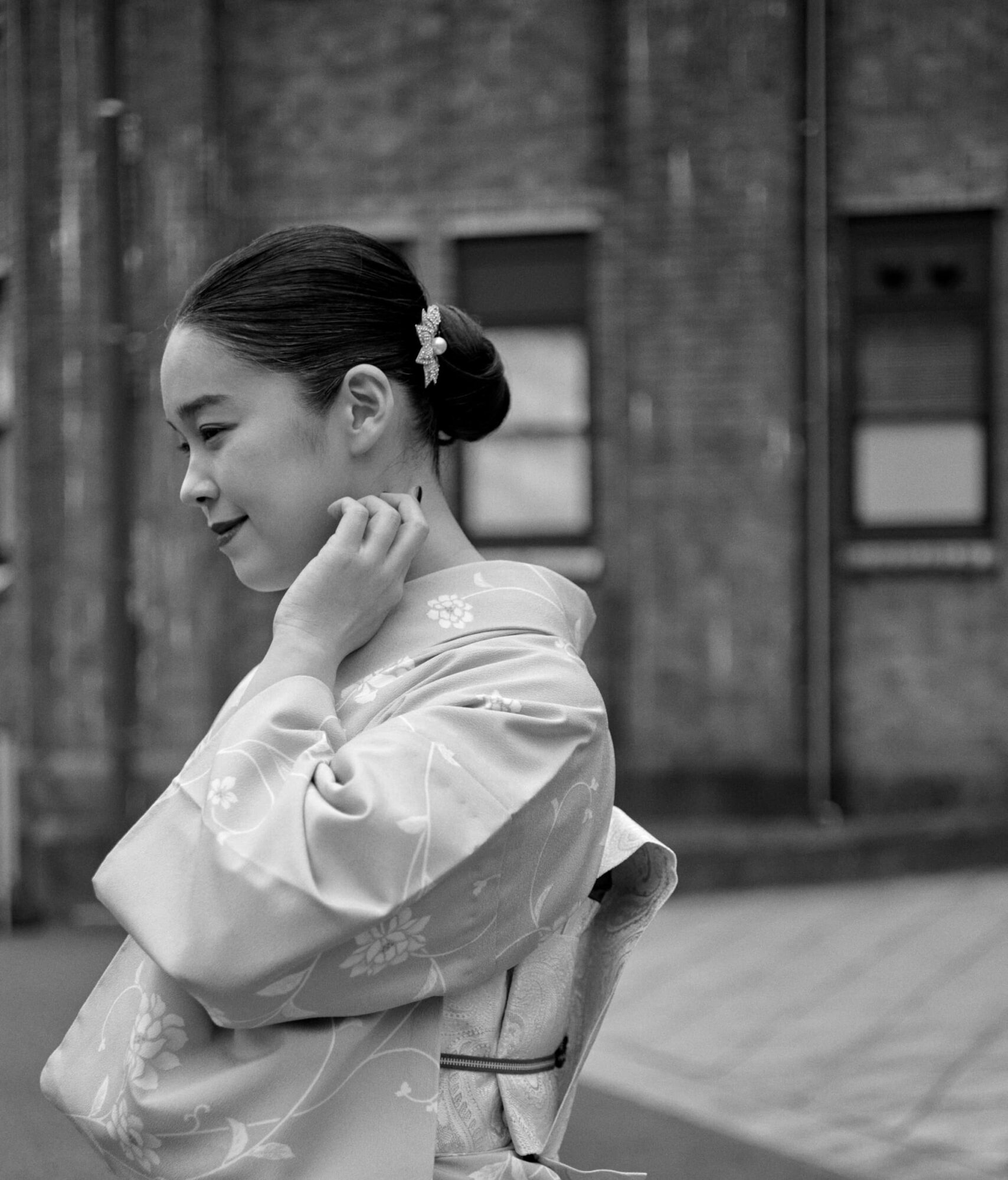
It's my story and yours
A night of worry, or a morning saved by a simple word. What we recall after time has passed is not the event itself, but the unnameable emotion that suddenly came to our mind at that moment.
In Tsuruko Hayashiya’s rakugo, such feelings are softly mixed into the story. The classic rakugo storytelling that had seemed like something else to you, suddenly feels like something that happened to you. You find yourself laughing, crying, and feeling a little relaxed.
Such a performance is what I believe can be called a “hymn to humanity.
The feelings you are currently experiencing may be gently woven into one of the stories. With such expectations, please take the time to visit a Yose theater. There, your story and mine will surely be waiting for you.
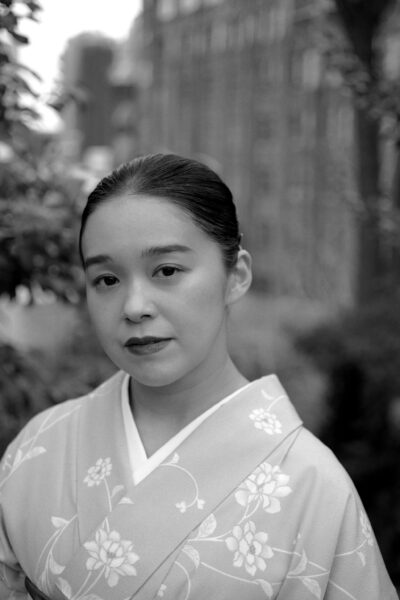
Rakugo performer
Tsuruko Hayashiya
In 2010, she entered the apprenticeship of Shozo Hayashiya IX, and was promoted to futatsu in November 2015. In addition to working on new works of rakugo, she has also taken on the challenge of portraying rakugo from the perspective of the women who appear in the classic rakugo masterpieces “Kofareru,” “Shibahama,” and “Konya Takao,” which has become a topic of conversation. In order to promote the development of rakugo culture, she has been active not only in yose, but also in a wide range of other activities such as rakugo performances at galleries and live houses, media appearances, YouTube, and social networking sites.
For information on upcoming performances, please visit the official website of Tsuruko Hayashiya.
WEBSITE
YOUTUBE
INSTAGRAM
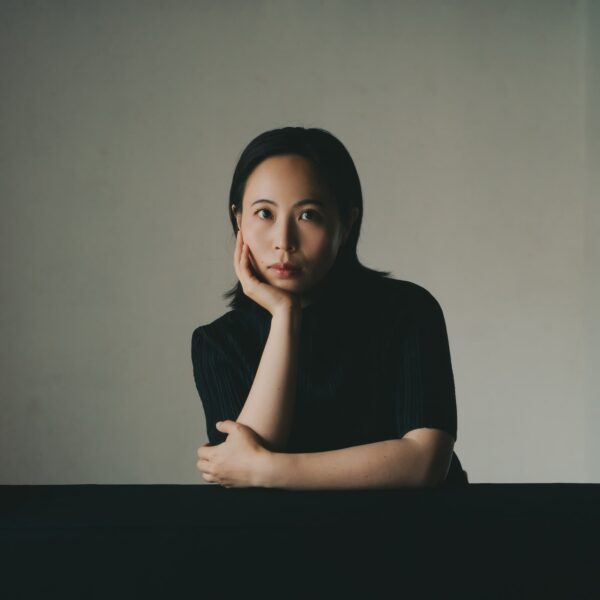
WRITER
Luna Yamada
After graduating from the music department of an art college, started writing career. Mainly writes columns, essays, and interviews, focusing on the web media. Because of wide range of interests, both good and bad, has never actually written many articles about music, despite the background in classical piano.
INSTAGRAM
